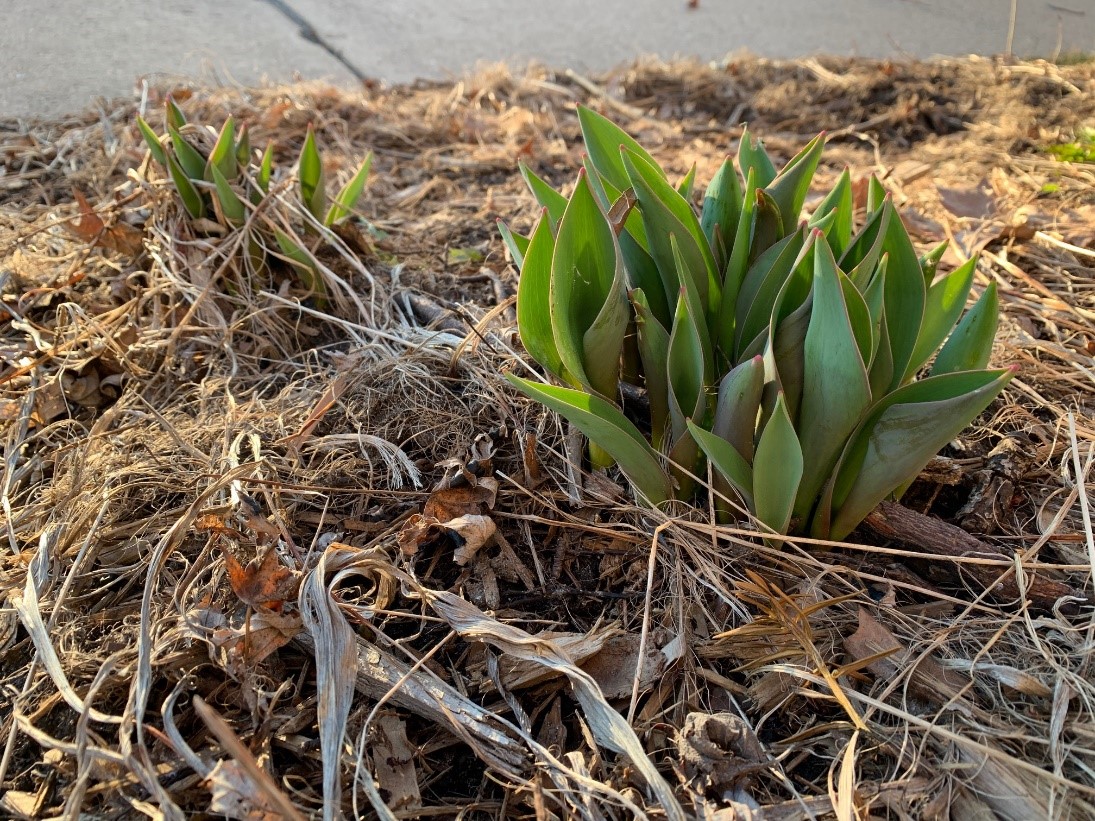What is a bulb?
Learn the features that will help identify a true bulb in the garden.

As green foliage and colorful blooms stealthily emerge from what seems to be vacant ground, we are reminded that magic lurks buried in the soil. “Bulb” is often used as a blanket term for these underground masses of magic, which can be very different growing structures such as true bulbs, corms, tubers and rhizomes. Understanding the difference between these structures will help you properly identify your true bulbs and know how to plant, maintain and propagate them. So let’s dig down and explore what it means to be a bulb.
Bulb is commonly used to describe geophytes, or plants that produce specialized underground stems where buds form. Storing carbohydrates for growth and keeping buds below ground helps the plant survive adverse conditions above ground such as fire, animal browsing or annual climactic cycles. With the right make up, soil can buffer against extreme temperature or moisture changes, keeping geophytes buried in more desirable conditions. Heavy compaction is one of the key factors that reduces the soil’s ability to buffer these changes.
True bulbs, corms, tubers and rhizomes are all common types of geophytes and the differences between them are presented below. To tell them apart, it is helpful to look at their structure, where buds are located and other features such as if there is a papery covering known as a tunic. True bulbs are mostly made up of modified leaf tissue known as scales. If you cut a true bulb in half, you would see layers of these scales with the main growing points in the center (imagine an onion). If you cut a corm, tuber or rhizome in half, you would see solid tissue (imagine a potato).
|
Common types of geophytes and the differences between them | ||||
|---|---|---|---|---|
|
|
True bulb |
Corm |
Tuber |
Rhizome |
|
Structure |
Modified underground stem with internal buds surrounded by modified leaves (scales) |
Modified underground stem with external buds |
Modified underground stem usually with buds formed on surface (eyes) |
Modified underground stem that grows horizontally (sometimes shallow) with external buds |
|
Buds for above ground plant |
In bulb |
At the top of corm |
Along surface of tuber |
Along surface of rhizome |
|
Other key features |
Interior is not solid – mostly leaf scales Scales used for storage Sometimes has a papery skin (tunic) |
Interior is solid Solid stem tissue used for storage Sometimes has a tunic |
Interior is solid Solid stem tissue used for storage No tunic |
Interior is solid Solid stem tissue used for storage No tunic |
|
How to divide or propagate more |
Pull offsets (bulblets or daughter bulbs) from base of old bulb and replant them |
Pull offsets (cormels) from base of new corm, which forms on top of the old corm |
Cut into sections that contain at least one bud |
Cut into sections that contain at least one bud |
Most true bulbs function on an annual replacement cycle. Throughout their apparent dormant season during the colder months, bulbs are pre-forming their organs such as leaves and flower buds underground so when the conditions are right, they emerge and become the above ground plant. After a period of growth and reproduction, the above ground plant dies back and the bulb enters another period of dormancy, preparing to do it all again the following year.
After this period of dieback is the proper time to divide your true bulbs, usually in the fall and every few years. Often you will find the offsets, known as daughter bulbs, at the base of the shriveled, original bulb. This is a method of asexual reproduction that most true bulbs rely on. However, bulbs can also reproduce sexually and form seed. It will usually take a few more years for seeds to produce a flowering plant than it will for the bulbs. Removing the spent flowers can help plants channel their resources into the bulb rather than using them to produce these seeds. It is important to not remove the leaves until they have withered because they are busy photosynthesizing and building up resources in the bulb, which will fuel the growth cycle.
When it comes to planting and maintenance, cold period, excessive temperatures and proper planting depth are all important factors to consider. Especially because they influence whether bulbs will come back year after year. Often our hardy bulbs, like tulips, require some cold to promote rooting, shoot growth and flowering. However, extreme cold or extreme heat can cause bulbs not to come back because of disruptions in the growth cycle. Proper planting depth can keep bulbs at a place where they are properly buffered by the soil and can emerge. If you plant a bulb too deep, it may become weaker year after year due to inadequate carbohydrate build up. If you plant a bulb to shallow, it may be vulnerable to these extremes or to animal browsing.

We can be thankful for bulb survival tactics, surprising us with the first green after the harshness of winter fades. Look out for tulips or daffodils this spring or lilies in the summer. Or next time you are cutting up an onion, give a small thanks to the bulbs that are all around, or under, us.



 Print
Print Email
Email




